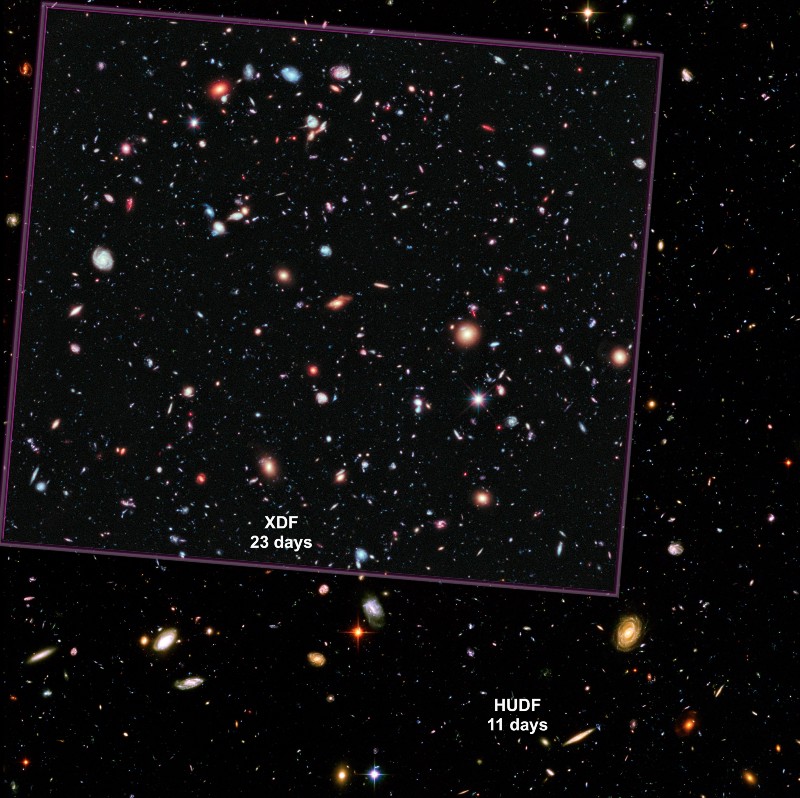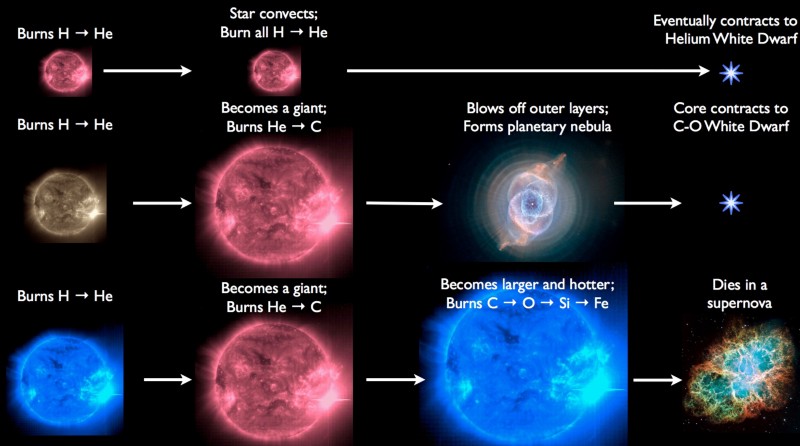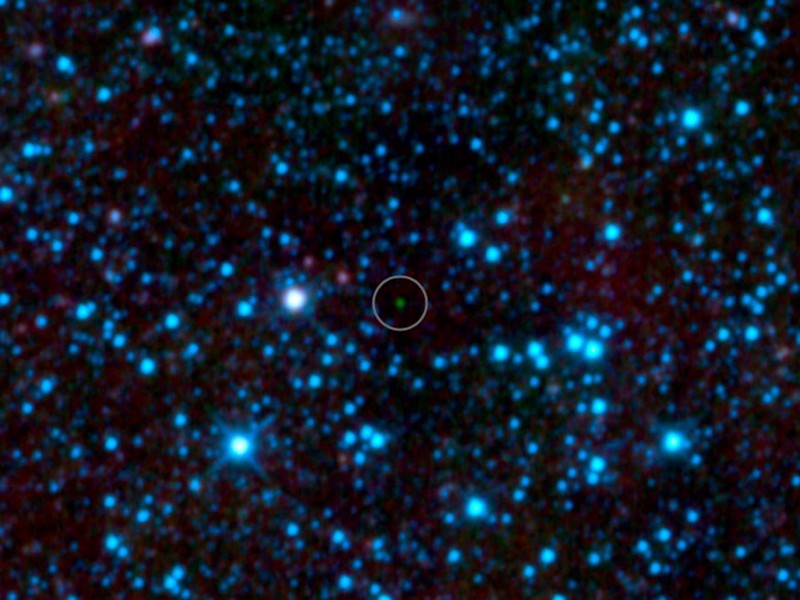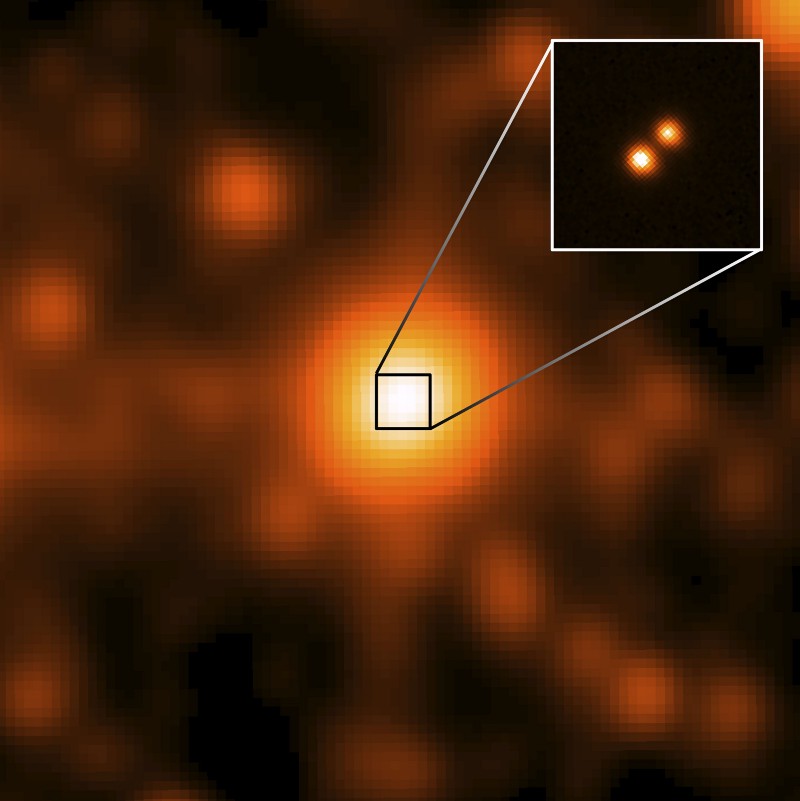Ask Ethan # 86: The Last Light in the Universe
Can unburned stars or stellar remains rekindle the light in the universe?
One small light creates a space in which darkness cannot exist. Light casts out darkness. And no matter how she tried, darkness cannot conquer the light.
- Donald L. Hicks
And although it seems inevitable that darkness will eventually win when the last photon of light leaves the field of vision, this moment will come much later than anyone expects. Among the questions you have sent, the following is given, as asked by Andrew Dodds:
I drew attention to one star system - Lyuman 16 - consisting of two brown dwarfs. I'm wondering - is it possible that such systems will unite with each other after falling in a spiral, and form a red dwarf? And if so, does this mean that we will have stars even after many trillions of years?
Today it is easy to look at the Universe, especially with all the equipment available to us, and to conclude that our eyes are presented with an almost unlimited supply of material. And the longer we look, the more we see!
')

It doesn't matter which part of the sky we look at:
• To the center of the Milky Way,
• in the hearts of nebulae or clusters,
• on galaxies outside of ours,
• or to a blank area of the sky,
we will be surrounded by luminous objects of deep space. Each of them shines either because it is a star, or because it is a group of stars.

But, despite all the stars in our galaxy (about 400 billion), all the galaxies in the visible part of the universe (at least 170 billion, and most likely much more), and the fact that the universe is expanding, the amount of light reaching us is constantly decreasing .
There are two reasons for this - one that affects remote sources, and one to the closest ones. Here they are.

1) Most of all in the universe of dark energy. Thanks to three independent measurement methods — cosmic microwave background radiation, remote type Ia supernovae, and baryon acoustic oscillations — we determined that matter is not the predominant form of energy in our Universe. At least not anymore. Instead, the normal matter of which we are composed, and the dark matter, which is five times larger, makes up only a third of the total amount of existing energy. The other two thirds is a new form of energy inherent in the space itself: dark energy.

When dark energy began to dominate the expansion of the universe about 6 billion years ago, distant galaxies that were moving away from us, began to move away even faster. Over time, these galaxies are moving further away from ours, and the light emitted by them loses the opportunity to reach us in the future due to the exponential expansion of space.
Now it is clear that in 100-150 billion years the galaxies of our local group - Andromeda, the Milky Way, the Triangle galaxy, the Magellanic clouds and another 40-50 dwarf galaxies - will merge together into one giant elliptical galaxy, and it will last a very long time. Thanks to dark energy, all other outer galaxies will move away from us to such distances that they become invisible. But we still have stars in our new giant elliptical house: Milkdromeda.
Some time. Insofar as…

2) Star fuel runs out in the universe. The rate of formation of new stars in the universe is less than ever: only 3% of the peak that happened many billions of years ago. And although we will get a big splash when the Milky Way unites with Andromeda, after that the speed of star formation will drop significantly.

The most massive stars will turn into supernovae, less massive ones, like the Sun, will drop the outer shells, which will then become planetary nebulae, and their insides will shrink and turn into white dwarfs. These supernovae and planetary nebulae emit quite a lot of unburned (or barely burned) fuel — hydrogen and helium — so new stars can continue to form over trillions of years. However, the speed of star formation will have to fall further, and in tens of trillions of years the emergence of even one star from the gas clouds will become an incredibly rare event.

Here's something else to remember: the stars with the smallest mass live the longest. The real star from the unlit one (or from the brown dwarf) separates whether it can synthesize helium from hydrogen in its core. This requires a minimum temperature of 4 million degrees. This requires a mass of 7.5 to 8% solar. This separates the brown dwarfs from the red dwarfs. With a minimum mass of red dwarf will burn 20 trillion years, and will be the most long-lived star.
In addition, the fate of red dwarfs is the easiest: instead of catastrophic death in the form of a supernova, or dropping the upper layers to form a planetary nebula, red dwarfs can convert 100% of hydrogen into helium, and shrink into a helium white dwarf.

If you asked us ten years ago which stars are most common in the Universe, we would say that these are M-class stars, or red dwarfs, and that about three out of every four stars belong to this class. Considering this, plus the fact that all sun-like stars will become red giants, shed their outer layers and then turn into white dwarfs - one could decide that after 100 trillion (10 14 ) years, all that remains is the full sky of white dwarfs.
And this is not so far from the truth! Given that these white dwarfs will remain “white” for about 1 to 10 quadrillion (10 15 - 10 16 ) years, until they are completely cooled down (according to the Kelvin-Helmholtz mechanism), it would be possible to stop emitting visible light. to decide what exactly this period is meant to leave in the sky what to look at.

But now something else is known, thanks to infrared observations like WISE. In addition to all known stars - and all future - there are a large number of "almost" stars. If we consider the two stellar systems nearest to the Earth, then two fresh additions will appear: both of them are systems with brown dwarfs. And just as two red stars of low mass can unite and form a bluer star of greater mass, two brown dwarfs that have not reached the hydrogen burning boundary can unite and become a real star!

Two brown dwarfs from the system Lüman 16
It turns out that the question is when they will unite, and what other processes exist that have an impact on their fate? Based on the fact that the reduction of their orbits occurs due to gravitational radiation, two objects of the system Lyuman 16 will take from 10 60 to 10 150 years to fall on each other in a spiral and unite. The mass of both objects is estimated at 4% solar, so after combining, they must form a real star.
But there are other processes that make just such an outcome of this particular system unlikely.

1) Forcible release. If these two stars were ideally isolated, then in the end they would fall on each other. But most of the time they spend in a giant, swarm-like galaxy filled with a trillion (or more) stars and stellar remnants. Quite often, a star passes by one or both of these brown dwarfs, and each time it has a chance to become more gravitational.
tied to the galaxy and throw these objects out!
This, of course, is unlikely, but in a sufficient amount of time something unlikely can happen. The average time for such an event is approximately 10 18 years. And although most of the objects will be thrown out, those who are stronger than the gravitational link, another fate awaits ...

2) Objects may collide, leading to amazing results! Depending on the collisions, any of the following events may occur:
• When two neutron stars collide, they will create a black hole and a burst of gamma rays.
• When two heavy (carbon-oxygen) white dwarfs collide, they will create a type Ia supernova.
• In the collision of light (helium) white dwarfs, they launch carbon synthesis and create a red giant.
• And when two brown dwarfs collide, they will create either a more massive brown dwarf (boring) or a new M-class star.
What time intervals are we talking about? On average, about 10 21 years. So, unless these two brown dwarfs rotate extremely close to each other (inside Mercury's orbit, for example), it is unlikely that they will merge together at the end.

But it is likely, if they are not thrown out, that they will encounter something else. If we consider that both helium white dwarfs and a large number (which we are just beginning to evaluate) brown dwarfs will collide and merge at intervals of about 10 21 years, it is reasonable to assume that even after the last star burns out, we will have rare stars in the distant the future.
If you are very lucky, then there may be planets, space ships or organic material, waiting for the emergence of another source of energy and a chance for life. The last chance to revive a previously existing, albeit briefly, may come at a time when the Universe will be a trillion times older than today, and when this chance will lead to the appearance of the only burning star in the entire observed Universe.

So thank you for the wonderful question and the chance to find out about our distant future, Andrew. Hope you enjoyed it. Send me your questions and suggestions for the following articles.
Source: https://habr.com/ru/post/369635/
All Articles